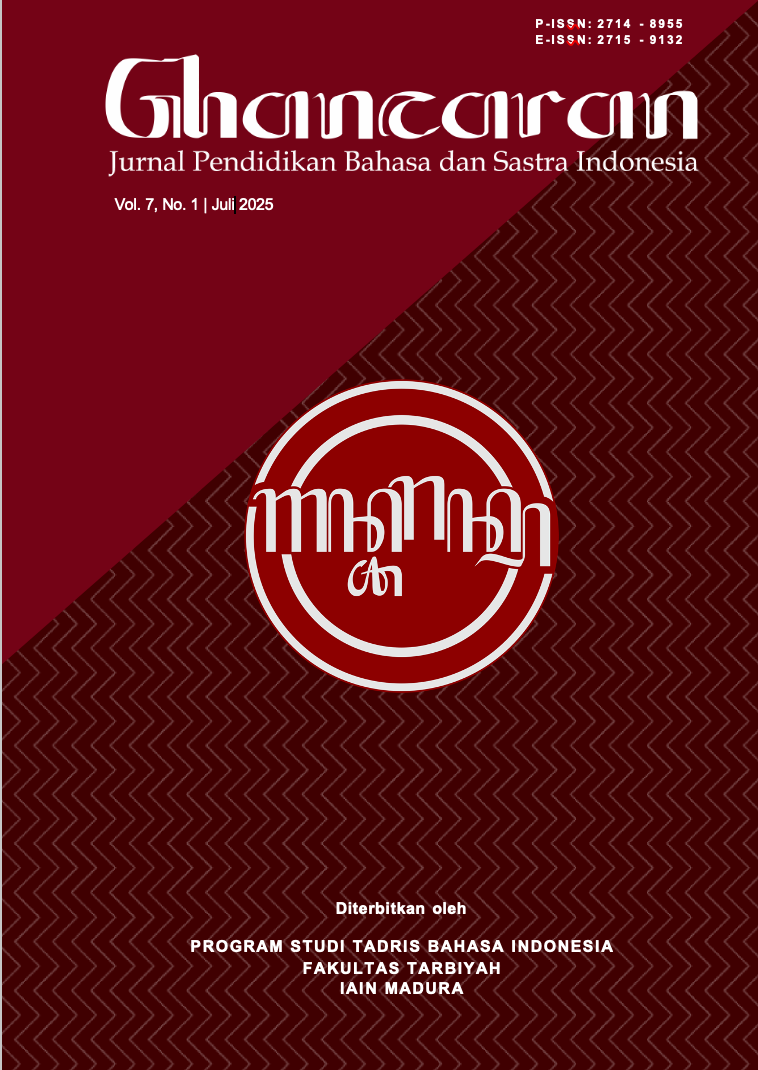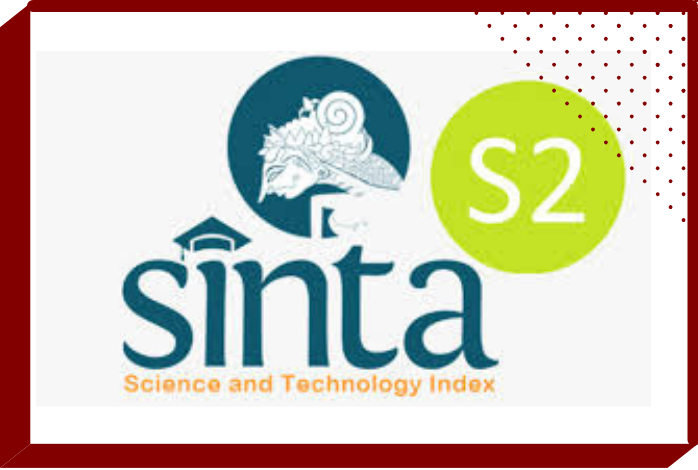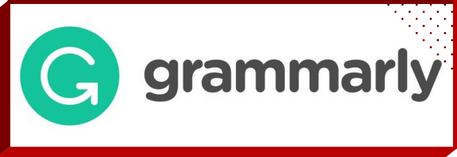Lanskap Linguistik Maya pada Katalog Distro BetawiBoys dan Sikap Bahasa
 Abstract views: 258
,
Abstract views: 258
,
 PDF downloads: 242
PDF downloads: 242
Abstract
In accordance with technological development, linguistic landscape is not only limited to physical landscape, but also virtual linguistic landscape on internet media, such as social media. Language usage choice is influenced by the language attitude towards a language. This research seeks to observe the language usage and attitude on an online catalogue of Distro BetawiBoys, a Batavian culture themed fashion store. There are 30 pictures which contain the use of Batavian, Indonesian, and English. The data are analysed by using a mixed method approach. The result shows that the use of Batavian is predominant that other languages that are often deemed to be more prestigious. This shows a positive language attitude towards regional language. Moreover, these findings shows an unusual result where most findings in Indonesian linguistic landscapes show the dominance of more prestigious languages.
Downloads
References
Almoaily, M. (2019). Linguistic Choices in the Saudi Entrepreneurial Cyberspace. International Journal of Applied Linguistics and English Literature, 8(2), 181–187.
Andriyanti, E. (2019). Linguistic landscape at Yogyakarta’s senior high schools in multilingual context: Patterns and representation. Indonesian Journal of Applied Linguistics, 9(1), 85–97.
Arka, I. W., & Yannuar, N. (2016). On the Morphosyntax and Pragmatics of-in in Colloquial Jakartan Indonesian. Indonesia & the Malay World, 44(130), 342–364.
Badan Pusat Statistik Provinsi DKI Jakarta. (2021, Agustus 13). Letak Geografis Provinsi DKI Jakarta, 2020.
Bolton, K. (2012). World Englishes and Linguistic Landscapes. World Englishes, 31(1), 30–33.
Bolton, K., Botha, W., & Lee, S.-L. (2020). Linguistic Landscapes and Language Contact. Dalam The Handbook of Language Contact. Oxford: Blackwell Publishing Ltd.
Chaer, A. (2015). Betawi Tempo Doeloe: Menelusuri Sejarah Kebudayaan Betawi. Depok: Masup Jakarta.
Creswell, J. W., & Creswell, J. D. (2022). Research Design: Qualitative, Quantitative, and Mixed Methods Approaches (6 ed.). New York: SAGE Publication, Inc.
Da Silva, A. M., Tjung, Y. N., Wijayanti, S. H., & Suwartono, C. (2021). Language Use and Tourism in Yogyakarta; The Linguistic Landscape of Malioboro. Wacana, 22(2), 295–318
Datang, F. A. (2023). Signage in Public Spaces: Impact of Tourism on the Linguistic Landscape of Labuan Bajo. International Review of Humanities Studies, 7(1), 92–107.
Fitriawati, A., & Datang, F. A. (2023). Indonesian Language Minority in the Virtual Space of Indonesian People Majority: Virtual Linguistic Landscape of Indonesia Subreddit. Lensa: Kajian Kebahasaan, Kesusastraan, dan Budaya, 13(2), 169–188.
Foster, M., & Welsh, A. (2021). English Usage in The Linguistic Landscape of Balikpapan’s Main Thoroughfares. Indonesia & the Malay World, 49(145), 448–469.
Garrett, P. (2010). Attitudes to Language. Dalam Key Topics in Sociolinguistics. Cambridge: Cambridge University Press.
Gorter, D., & Cenoz, J. (2024). A Panorama of Linguistic Landscape Studies. Bristol: Multilingual Matters.
Grijns, C. D. (1991). Jakarta Malay. Leiden: KITLV Press.
Hires-László, K. (2019). Linguistic Landscapes in a Western Ukrainian Town. Corvinus Journal of Sociology & Social Policy, 10(1), 87–111.
Holmes, J., & Wilson, N. (2022). An Introduction to Sociolinguistics (6 ed.). London: Routledge.
Indarti, Y. (2018). Linguistic Landscape as a Social Identity Construction of the Public Space: The Case of Batu District. Dalam T. Kerr, B. Ndimande, J. Van der Putten, D. F. Johnson-Mardones, D. Arimbi, & Y. Amalia (Ed.), Urban Studies: Border and Mobility. New York: Routledge.
Ivkovic, D. (2012). Virtual Linguistic Landscape: A Perspective on Multilingualism in Cyberspace. Ottawa: Library and Archives Canada.
Ivkovic, D., & Lotherington, H. (2009). Multilingualism in Cyberspace: Conceptualising the Virtual Linguistic Landscape. International Journal of Multilingualism, 6(1), 17–36.
Jones, P. I., & Osborne, T. (2020). Analysing Virtual Landscapes Using Postmemory. Social & Cultural Geography, 21(2), 186–206.
Karpava, S. (2024). Multilingual Linguistic Landscape of Cyprus. International Journal of Multilingualism, 21(2), 823–861.
Kircher, R., & Zipp, L. (2022). An Introduction to Language Attitudes Research. Dalam R. Kircher & L. Zipp (Ed.), Research Methods in Language Attitudes. Cambridge: Cambridge University Press.
Knörr, J. (2014). Creole Identity in Postcolonial Indonesia. Berghahn Books.
Kurniawan, F. O. (2023). Variation and Change in Jakarta Indonesian: Evidence from Final Glottals. Oceanic Linguistics, 62(2), 267–288.
Landry, R., & Bourhis, R. Y. (1997). Linguistic Landscape and Ethnolinguistic Vitality: An Empirical Study. Journal of Language and Social Psychology, 16(1), 23–49.
Leedy, P. D., & Ormrod, J. E. (2020). Practical Research: Planning and Design (12 ed.). Pearson.
Lehmann, W. (2023). Social Media Theory and Communications Practice. New York: Routledge.
Leimgruber, J. R. E., & Fernández-Mallat, V. (2021). Language Attitudes and Identity Building in the Linguistic Landscape of Montreal. 7(1), 406–422.
Manns, H. (2014). Youth Radio and Colloquial Indonesian in Urban Java. Indonesia & the Malay World, 42(122), 43–61.
Muhadjir. (2000). Bahasa Betawi: Sejarah dan Perkembangannya. Jakarta: Yayasan Obor Indonesia.
Mura, P. (2023). Local Languages and the Linguistic Landscape: the Visibility and Role of Sardinian in Town Entry and Street Name Signs. Sociolinguistica, 37(2), 257–285.
Plautz, A.-M., Hasenauer, L., Jelen, I., Čede, P., & Steinicke, E. (2022). Symbolic Ethnicity, Cultural and Linguistic Landscape: Remnants of “Little Europe” in the Valcanale (Northeast Italy). National Identities, 24(2), 121–143.
Purnanto, D., Yustanto, H., Ginanjar, B., & Ardhian, D. (2022). English Operation in Public Space: Linguistic Landscape in Culinary Business of Surakarta, Indonesia. Journal of Language & Linguistics Studies, 18(1), 345–360.
Sakhiyya, Z., & Martin-Anatias, N. (2023). Reviving the Language at Risk: A Social Semiotic Analysis of the Linguistic Landscape of Three Cities in Indonesia. International Journal of Multilingualism, 20(2), 290–307.
Sari, D. F., Yusuf, Y. Q., Putri, V. N., Usman, H., & Qismullah, F. I. (2024). Shop names and Language Culture: a Study of Linguistic Landscape in Aceh’s Tourist Hub. International Journal of Language Studies, 18(3), 83–106.
Shohamy, E., & Gorter, D. (Ed.). (2008). Linguistic Landscape. New York: Routledge.
Sneddon, J. (2003). The Indonesian Language: its History and Role in Modern Society. Sydney: UNSW Press.
Sneddon, J. (2006). Colloquial Jakartan Indonesian. Pacific Linguistics, Research School of Pacific and Asian Studies, The Australian National University.
Syahid, A. (2023). Sikap Bahasa Pembaca Tanda terhadap Bahasa Jepang dalam Lanskap Linguistik Little Tokyo Blok M. Depok: Universitas Indonesia.
Tondo, F. H. (2009). Kepunahan Bahasa-Bahasa Daerah: Faktor Penyebab dan Implikasi Etnolinguistis 1. Jurnal Masyarakat dan Budaya, 11(2), 277-296.
Wardhaugh, R., & Fuller, J. M. (2015). An Introduction to Sociolinguistics (7 ed.). Wiley Blackwell.
Weyers, J. R. (2021). Vos and Tú in the Linguistic Landscape: Attitudes Toward Their Use in Medellín, Colombia. Spanish in Context, 18(2), 218-218–236.
Yothinsirikul, S. (2022). Linguistic Landscape from Business Names in Mueang District, Phayao Province. Journal of Language & Linguistics Studies, 18(2), 380–390.
Zakiyah, F., Susylowati, E., & Shabrina, K. N. (2024). Language Used in Shop Signs in Kamal, Madura: Virtual Landscape Linguistics Using Google Street View. E3S Web of Conferences, 499, 1. EDP Sciences.
Zein, S. (2019). English, Multilingualism and Globalisation in Indonesia. English Today, 35(1), 48–53.
Copyright (c) 2025 GHANCARAN: Jurnal Pendidikan Bahasa dan Sastra Indonesia

This work is licensed under a Creative Commons Attribution-ShareAlike 4.0 International License.
Ghancaran: Jurnal Pendidikan Bahasa dan Sastra Indonesia uses an Open Access Policy under the Creative Commons Attribution-ShareAlike 4.0 International License. Authors publishing in this journal agree to the following terms:
- Ghancaran Journal holds the copyright and grants the journal rights for first publication with the work simultaneously licensed under a

The work is distributed under Creative Commons Attribution-ShareAlike 4.0 International License which allows others to share, copy, and redistribute the material in any media or format and adapt, remix, change, and develop the material even for commercial purposes, as long as it is stated credit and license derivative works under similar terms. - Authors may make additional contractual arrangements for non-exclusive distribution of the journal's published work version.
- Authors are permitted to post their work online (e.g., in institutional repositories or on their websites) before and during submission, as doing so may lead to productive exchange.



















